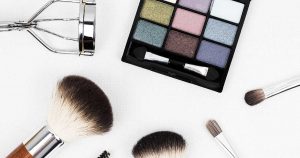 The aesthetic appeal of a pearlized product is undeniable. Pearlescence imparts an elegance and richness to a product that can elevate its appearance from an ordinary to a premium look. Depending on the type of product, this look can be achieved by different methods.
The aesthetic appeal of a pearlized product is undeniable. Pearlescence imparts an elegance and richness to a product that can elevate its appearance from an ordinary to a premium look. Depending on the type of product, this look can be achieved by different methods.
For personal care and beauty compositions, an approach commonly used is the addition of opacifiers such as Ethylene glycol mono- and distearates within a concentration range typically between 1% and 2%. Hallstar® EGMS and Lexemul® EGDS are two such examples that are listed on Prospector.
For optimal effect, these ingredients are added at a temperature above 70˚C, which should be maintained while mixing, to allow the material to fully melt and be finely dispersed. Crystals are then formed in-situ during the cooling process and are suspended in the base, resulting in the pearled effect. Many factors can affect the size of the crystals formed and ultimately the appearance of the pearl in the final product:
- Particular stearate used
- Cooling rate
- Rate of stirring
- Composition of the base
- Viscosity of the base
Fatty acid soaps created in-situ by partial neutralization with an alkali base have also been used to deliver the desired sheen and luster of a pearlescent product – an approach that has been documented in published patent documents1,2.
According to the authors, a key factor in achieving the luster effect is careful control of the level of soap formed in the composition, with soaps of stearic acid being particularly effective at delivering a pearly product.
Concentrated pearl mixtures have been en vogue for some time and are widely used. They offer the formulator convenience, the ability to utilize a cold process and the ability to deliver a more consistent product, since these mixtures are not sensitive to the same variables described above. These blends are typically comprised of one of the aforementioned stearates combined with a surfactant or surfactant blends. These concentrates have evolved since first being introduced, with present-day compositions formulated to be milder and more regulatory-compliant than earlier versions. Examples listed on Prospector include: Quickpearl™ PK3 Pearlizing Agent; Euperlan® Green; and Perlogen® SF 3000.
Inorganic natural substances such as Mica or coated Mica are also commonly employed as pearlizing agents, especially in color cosmetics where they contribute sparkle and sheen – attributes that are particularly desirable in that product category.
References:
- Huang, L; Harichian, B; Shanling, S. Pearlescent Liquid Cosmetic Composition. US Patent Application 20100105742, April 29, 2010.
- Huang, L; Harichian, B; Shanling, S. Pearlescent Liquid Cosmetic Composition, WO Patent Application 2010046406, April 29, 2010.
The views, opinions and technical analyses presented here are those of the author or advertiser, and are not necessarily those of ULProspector.com or UL Solutions. The appearance of this content in the UL Prospector Knowledge Center does not constitute an endorsement by UL Solutions or its affiliates.
All content is subject to copyright and may not be reproduced without prior authorization from UL Solutions or the content author.
The content has been made available for informational and educational purposes only. While the editors of this site may verify the accuracy of its content from time to time, we assume no responsibility for errors made by the author, editorial staff or any other contributor.
UL Solutions does not make any representations or warranties with respect to the accuracy, applicability, fitness or completeness of the content. UL Solutions does not warrant the performance, effectiveness or applicability of sites listed or linked to in any content.



Hi Priscilla:
Thanks for the section on pearlizing agents, I was wondering if these agents glycol disterate work well in combination with carbomers or acrylate film forming copolymers that you also have to use to thicken. I heat the glycol diasterates with SLS surfactants and mix very fast and notice the sparkles in the liquid but on addition of acrylate copolymers sometimes the liquid loses its shine. upon cooling the product still appears milky but does not have the brightness that I want. I sometimes use glycol stearate, glycol distearate, stearic acid that I heat for 30 minutes before addition of glycerin, Polysorbate, fragrance, PEG-oleate, salt and aloe liquid. When the product does not thicken I add crothix in the cool down phase. I was attempting to make a pearlescent shampoo that contains 2-3% of coconut oil or other oils. For conditioning I will also add poyquartenium. The preservative is germal liquid. Do you recommend mortal and pestal to grind the glycol diasterate into thin powder before sifting into the aqueous phase? What about using a stick blender to emulsify the ingredients, will that work better to create the pearlescent effect. I have seen better results when I emulsify the ingredients instead of just simply mixing and heating? Thanks for any advice and I enjoyed Perry’s course, I gained a lot of valuable information from it and from ULProspector.
Miguel,
The procedure that I have used when formulating shampoos with carbomers is to hydrate the carbomer first followed by addition of the surfactants and other water phase ingredients. This is then heated to 65 – 70C at which point the distearate is added. Once all the ingredients have been added, the batch is allowed to cool to room temperature with steady mixing. No need to pulverize the distearate.
I hope this helps.
I have used glycol distearate in only 0.10 percent in my for mulla it is exactly foam killer what should I do in this situation.